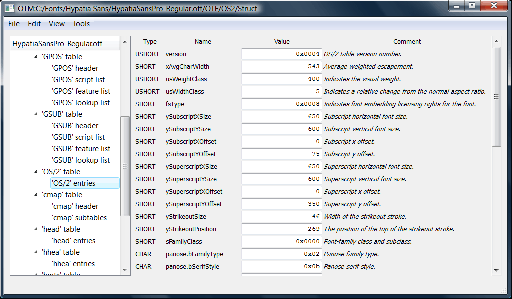A little while back, Tim Ahrens asked me if I’d write a testimonial for his Font Remix Tools (“RMX Tools”), a set of plug-ins for FontLab Studio 5. I was more than happy to share my thoughts:
“The Font Remix Tools are an essential toolkit for anyone who wants to develop sophisticated typefaces with much greater efficiency. I can’t imagine willingly working without them. Type designers owe it to themselves and their sanity to check out RMX Tools.” — Thomas Phinney, Senior Fonts Product Manager at Extensis, designer of Hypatia Sans Pro for Adobe
(FontLab Studio is the primary type design application used by the overwhelming majority of professional type designers. FontForge and DTL FontTools (including FontMaster) are its fellow high-end alternatives, while TypeTool and Fontographer are the primary low to mid-range options.)
Tim has a interesting/useful demo version for free download, while the full version starts at €179 for one computer.
I think of the Remix Tools as having two sets of functions. First are several very useful things that work with just about any typeface:
- “harmonize” curves: this takes the “lumpiness” out of malformed curves. Very cool, even for moderately experienced type designers, though the experts may not need it.
- intelligent slant: slants glyphs while keeping vertical tangents straight. A useful step towards making italics, at least for sans serifs.
- tabular figures from proportional with only a couple of clicks
But the real power of RMX comes when you start with a font file that has a Multiple Master weight axis. Yeah, I know MM fonts are pretty nearly dead as a deliverable format for end users. Apple’s support for MMs is flaky enough that Extensis tech support has suggested Suitcase should warn people they won’t work reliably, and Windows has no reasonable native support (an ATM install can be hacked on Vista and probably Windows 7 to make them work well, or you can do manual registry entries for every single font).
Yet Multiple Master fonts are still very useful as a font development tool, even if what gets delivered is a bunch of separate fonts. Although Adobe hasn’t shipped a new MM font since the 90s, virtually all their internally developed type families use MM technology, and many other typeface designers use it as well. If you start with a font that has master outlines for two different weights, RMX can incredibly easily:
- create true condensed and extended versions (again, generally without distortion!)—or add a full “width” axis for infinite variation
- tune the width, height and weight of single letters interactively
- automatically generate small caps with the “right” weight and width (as determined by you, the designer, but with some very clever defaults)
- generate superiors, inferiors, numerators and denominators similarly
- make even better automatic tabular figures
Most of these functions still seem like magic when I see them working. Most of it works insanely well almost all the time. Of course it still needs to be checked by humans, and there can be problems on occasion, but dang….
What about Superpolator?
Aside from the Font Remix Tools, another insanely powerful option for working with font development using the power of MM space is Superpolator from Just van Rossum and Erik van Blokland, a.k.a. LettError. It has always looked great, but back when I was doing a lot of type design, my main box for doing so was Windows based, and Superpolator is a Mac-only tool, so I never really gave it a fair try. It’s available from €250.
More on MM fonts:
- Original Adobe article
- my oldarticle on font formats

